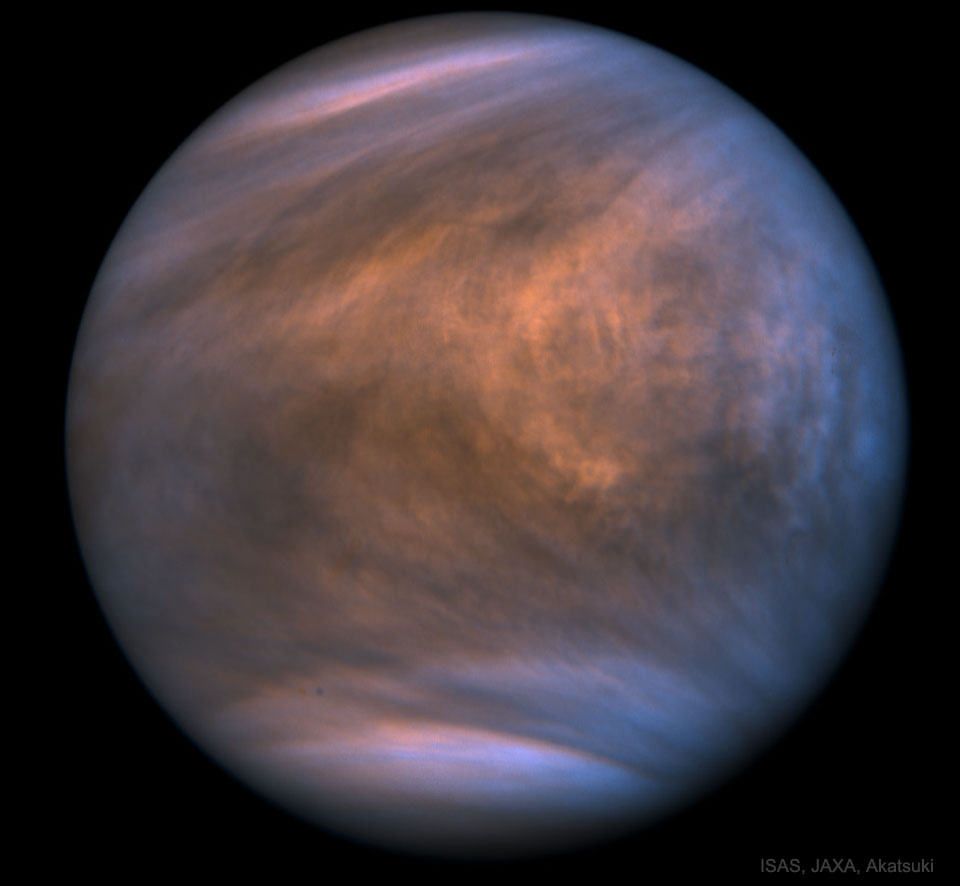2020年9月15日
Biomarker Phosphine Discovered in the Atmosphere of Venus
Image Credit: ISAS, JAXA, Akatsuki; Processing: Meli thev
Explanation: Could there be life floating in the atmosphere of Venus? Although Earth’s planetary neighbor has a surface considered too extreme for any known lifeform, Venus’ upper atmosphere may be sufficiently mild for tiny airborne microbes. This usually disfavored prospect took an unexpected upturn yesterday with the announcement of the discovery of Venusian phosphine. The chemical phosphine (PH3) is a considered a biomarker because it seems so hard to create from routine chemical processes thought to occur on or around a rocky world such as Venus — but it is known to be created by microbial life on Earth. The featured image of Venus and its thick clouds was taken in two bands of ultraviolet light by the Venus-orbing Akatsuki, a Japanese robotic satellite that has been orbiting the cloud-shrouded world since 2015. The phosphine finding, if confirmed, may set off renewed interest in searching for other indications of life floating high in the atmosphere of our Solar System’s second planet out from the Sun.
Experts Debate: How will humanity first discover extraterrestrial life?
Tomorrow’s picture: asteroid ejection
金星大气有生命标记”膦”
影像提供: ISAS, JAXA, Akatsuki; 影像处理: Meli thev
说明: 有生命体漂浮在金星的大气里吗?虽然这颗地球的姐妹行星,其表面环境咸认过于极端,任何已知的生命体都难以存在,不过金星的高层大气可能较温和,或许空漂的微生物能够存活。金星环境不利于生命存在的看法,随着昨天宣布在金星发现膦之后,出现了意外的反转。化合物膦(PH3)咸认是一种生物标记,地球上的微生物可以合成膦,不过在金星这种石质行星的表面或附近,常见的化学过程应难以合成这种化合物。这幅金星笼罩着厚重云层的主题影像,是由2015年起开始绕行这颗云雾行星的日本无人探测船拂晓号,摄于2个不同的紫外光波段。膦的发现如获得证实,或许会重燃我们在太阳系第二颗行星的大气,寻找漂浮生命体迹证的兴趣。 (phosphine 膦)
专家辩论:人类将如何首先发现外星生命?
明日的图片: asteroid ejection







